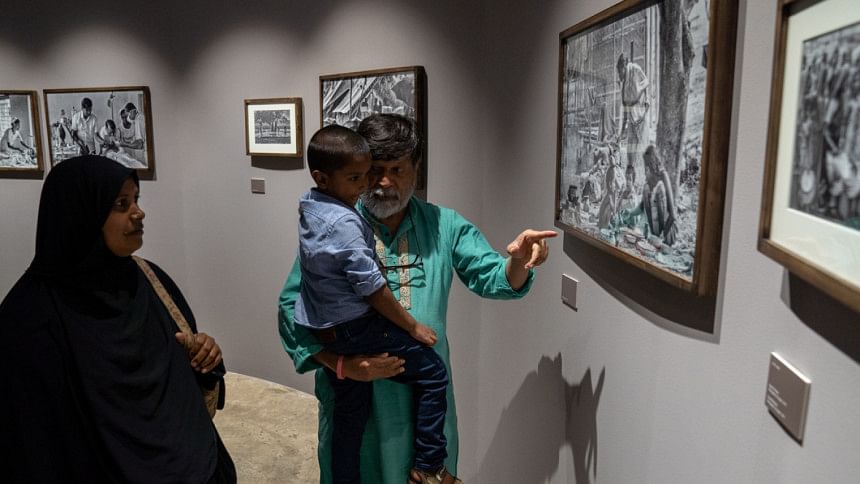Drik celebrates 33rd anniversary with Amiya Tarafdar’s ‘The Long Journey Home’
Drik Gallery has celebrated its 33rd founding anniversary with the inauguration of Indian photographer Amiya Tafadar's solo exhibition "The Long Journey Home".
The exhibition, which features heart-wrenching photographs captured during the War of Liberation, 1971– was inaugurated on September 4, 2022. This open-for-all exhibition will run at Drik Gallery from 3:00 PM to 8:00 PM every day till September 16, 2022.

Shahidul Alam, the founder of Drik, Meghna Guhathakurta, academic and executive director of Research Initiatives Bangladesh (RIB), and ASM Rezaur Rahman, curator of the exhibition, graced the event with their presence and gave their valuable speeches in the opening ceremony.
Amiya Tarafder became a pioneer photojournalist during the War of Liberation 1971 for his undeterred work. With his life on the line, he photographed war-torn Bangladesh so that the rest of the world could witness the monstrosity of the Pakistani regime.
Prominent newspapers at that time, Time Magazine, Newsweek, and other international platforms, used to feature his photos of the war. He is well known for the photograph of "limp bodies dangling from rickshaws". He was born in Rajshahi in 1935 and received his education in Kolkata.

Amiya Tarafdar's greyscale photographs gracefully adorn the grey-coloured interior of Drik Gallery. Photographs, namely "Homeward Bound" and "Exodus", show Bangladeshi refugees travelling on foot and caravans in Balurghat and Satkhira.
Amiya also featured heartbreaking images that he captured in the refugee camps of India in the exhibition. Through these photographs, spectators can see the dedication of the health professionals in Hindustan Steel Hospital medical camp, who worked hard to heal their injured Bangladeshi migrant patients. The most tragic photo in that section is of a "Human Saline Stand", showing a refugee holding a saline bag for his sick child.
Photographs such as "Monsoons", "Family Meals", "Queue for Food" portray the daily life of refugees in India during the war. "Enlistment", "Training of Muktis", "Ordinary Heroes" show the arduous training the freedom fighters received to fight the war against Pakistan. "Survivors" is a series of saddening photos of people who lived through the turmoil, torture, and deaths of loved ones. Amiya also captured Pakistani soldiers on duty, Biharis, who surrendered, and the wretched razakars.

In one of his photographs, a myriad of people can be seen waiting for Bangabandhu Sheikh Mujibur Rahman on the walls. A frame holding the photograph of Bangabandhu Sheikh Mujibur Rahman, with his majestic enraged gesture, can also be seen in the gallery. The leaders of the Mujibnagar Government have also been captured through Amiya's lenses.
Fulbari in Dinajpur, the historic Meherpur, the urban areas of Dhaka consisting of Nabisco, Jonaki Cinema Hall, and Dhaka Stadium- visitors can see all of these places through Amiya's photography as though they are on a time machine. However, in all this gloom, the images of victory and the smiles on people's faces after independence, especially on children's faces, are priceless and bring tears of joy to the spectators.

 For all latest news, follow The Daily Star's Google News channel.
For all latest news, follow The Daily Star's Google News channel. 






Comments